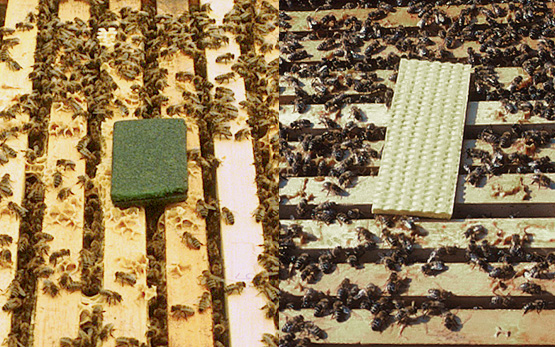Rigotti S, Viret O, Gindro K
Two new primers highly specific for the detection of Botrytis cinerea Pers.: Fr.
Phytopathologia Mediterranea, 45, (3), 2006, 253-260.
Gindro K
Développement d'outils pour la sélection précoce de cépages résistants au mildiou.
Dans: . 2006, 14-19.
Gindro K
Esca de la vigne.L'ennemi est cerné: plus de 50 champignons sont concernés. Communiqué de presse.
Journal Agri, 22, (3), 2006, 22-22.
Gindro K
Développement d'outils pour la sélection précoce de cépages résistants au mildiou.
Dans: . 2006, 14-19.
Viret O, Gindro K
L'esca en Suisse.
Dans: . 2005, 81-83.
Viret O, Gindro K
L'esca en Suisse.
Dans: . 2005, 81-83.
Gindro K, Pezet R, Viret O, Richter H
Development of a rapid and highly sensitive direct-PCR assay to detect a single conidium of Botrytis cinerea Pars.: Fr in vitro and quiescent forms in planta.
Vitis, 44, (3), 2005, 139-142.
Pezet R, Viret O, Gindro K
Plant-microbe interaction: the Botrytis grey mould of grapes. Biology, biochemistry, epidemiology an.
2004.
Fargeix C, Gindro K, Widmer F
Soybean (Glycine Max.L.) and bacteroid glyoxylate activities during nodular senescence.
Journal of Plant Physiology, 161, (2), 2004, 183-190.
Richter H, Gindro K, Viret O
Stilbene synthase and the downy mildew - grape interaction.
Schweizerische Gesellschaft für Phytomedizin (SGP-Info), 2, 2004, 7-7.
Pezet R, Gindro K, Viret O, Richter H
Effects of resveratrol, viniferins and pterostilbene on Plasmopara viticola zoospore mobility and disease development.
Vitis, 43, (3), 2004, 145-148.
Pezet R, Gindro K, Viret O, Spring J
Glycosylation and oxydative dimerization of resveratrol are respectively associated to sensitivity and resistance of grapevine cultivars to downy mildew.
Physiological and Molecular Plant Pathology, 65, 2004, 297-303.
Pezet R, Perret C, Jean-Denis J, Tabacchi R, Gindro K, Viret O
delta-viniferin, a resveratrol dehydrodimer: one of the major stilbenes synthetized by stressed grapevine leaves.
Journal of Agricultural and Food Chemistry, 51, (18), 2004, 5488-5492.
Gindro K, Pezet R, Richter H, Viret O
La vigne réagit mécaniquement aux attaques du mildiou.
Journal Agri, 10, 2004, 16-16.
Gindro K, Pezet R, Richter H, Viret O
La vigne réagit mécaniquement aux attaques du mildiou.
Dans: . 2004, 14-18.
Vauclare P, Cots J, Gindro K, Widmer F
The glyoxylate cycle as an essential step in carbon reallocation mechanisms.
2003.
Gindro K, Pezet R, Viret O
Histological study of the response of two Vitis vinifera cultivars (resistant and susceptible) to Plasmopara viticola infections.
Plant Physiology and Biochemistry, 41, (9), 2003, 846-853.
Cots J, Fargeix C, Gindro K, Widmer F
Pathogenic attack and carbon reallocation in soybean leaves (Glycine max.L.): reinitiation of the glyoxylate cycle as a defence reaction.
Journal of Plant Physiology, 159, (1), 2002, 91-96.
Rigotti S, Gindro K, Richter H, Viret O
Characterization of molecular markers for specific and sensitive detection of Botrytis cinerea Pers.: Fr. in strawberry (Fragaria x ananassa Duch.) using PCR.
FEMS Microbiology Letters, 209, (2), 2002, 169-174.
Gindro K, Pezet R
Effects of long-term storage at different temperatures on conidia of Botrytis cinerea Pers. : Fr.
FEMS Microbiology Letters, 204, 2001, 101-104.







